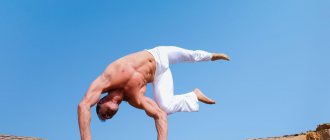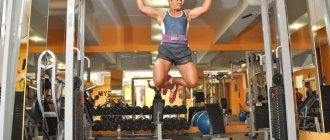Dancing is one of the most effective ways to lose weight, which helps burn calories, strengthen muscles, and tone the body. In addition, dancing gives a positive charge of emotions, lifts your spirits, increases self-esteem and self-confidence. By dancing, you can easily maintain training discipline and motivation. After all, this is not just a routine sport, it’s fun!
Absolutely all types of dances promote weight loss and help you lose weight if they are practiced regularly: be it Zumba, belly dancing, dance aerobics, modern dance, twerking or pole dancing. If you love to dance and want to lose weight, then you are in luck. Dancing is an ideal strategy for losing excess weight and improving your figure.
Dance training: how to do it
Before moving on to a review of the most popular dance styles, let's first note the main benefits of regular dance classes. What are the benefits and features of dance training?
Benefits of dance training
- Dancing is a type of aerobic exercise that increases your heart rate and burns calories, thereby helping you lose weight. Depending on the intensity of the lesson, you can burn from 200 to 400 calories in half an hour of dancing. This daily calorie loss is quite sufficient for gradual weight loss, especially when combined with a balanced diet.
- Dancing strengthens the entire muscular system of your body. Every time you practice dance steps and movements, you are working a large number of muscle groups at the same time. Repeating movements over and over again in a dance class or workout is great for muscle development. A strong muscular body is not only aesthetically beautiful, but also useful in terms of fat burning (muscle tissue burns several times more calories than fat tissue).
- Dance training is a fun, creative activity. If you love dancing, then you will not get bored with the training routine, as often happens after repeated repetitions of monotonous strength or cardio exercises. Thanks to dancing, you can maintain sports motivation for a long time.
- Dancing helps fight stress. Firstly, rhythmic movements to pleasant music a priori lift your spirits, so after a dance class you will definitely leave in a great mood. Secondly, like any physical activity, dancing contributes to the production of endorphins - hormones of pleasure and happiness.
- Dancing helps improve self-esteem. On the one hand, you will be proud of your success and development in the dance field. On the other hand, good control of your own body allows you to find harmony in your soul, feel satisfaction and comfort.
- Dancing improves your posture. It's no secret that straight posture is not only one of the important parameters of a beautiful appearance, but also the health of the spine. Regular dance training will relieve you of back and lower back pain, and also minimize the harm from a sedentary lifestyle.
- Dancing develops grace, flexibility and coordination. Step by step you will learn new choreography, synchronize movements with music, work on softness and smoothness of lines. This is an amazing way to liberate the body and forget about internal barriers.
Of course, the benefits of dancing largely depend on the choice of a specific dance direction. For example, there are certain types that are especially effective for losing weight (Zumba, Latin dancing, dance aerobics), for developing muscles and improving posture (ballet training, modern), for strengthening leg muscles (step aerobics, Irish step), etc.
10 basic rules of dance classes
Here are a few general rules regarding dance training and its effectiveness for weight loss. If you have already chosen a specific type of dance, we recommend that you also read additional information about the features of this direction or consult with your coach (choreographer).
- Be sure to do a short warm-up before your dance workout to prepare your muscles, joints and ligaments for the activity.
- Don't forget to wear comfortable practice shoes that are appropriate for your dance practice. If dancing involves jumping and impact, then train in sports shoes. Check out our TOP 20 women's fitness sneakers.
- Do not eat at least an hour before class to ensure that you are comfortable during your workout. If you are planning a full lunch before dance training, then at least 1.5 hours should pass before the class for normal absorption of food.
- To maintain muscles, 30-40 minutes after training you need to eat a small portion of protein with carbohydrates (for example, cottage cheese with an apple, whey protein with milk, vegetables with chicken breast). Another option, which is considered more preferable for those losing weight, is not to eat for two hours after training. But such a long period without food is not always comfortable, so be guided by your body.
- Drink a glass of water 20 minutes before starting your dance workout. Drink small sips every 10 minutes of class. After your workout, drink another glass of water to rehydrate.
- If you want to lose weight, then you need to try to adhere to the principles of proper nutrition throughout the day, following the simple rule of energy balance: consume fewer calories than the body expends.
- You can do dance training at any time convenient for you, both in the morning and in the evening. The only recommendation is that if you practice intense dance exercises in the afternoon, it is better to do them at least 3 hours before bedtime, so as not to provoke insomnia.
- Despite the fact that dance training is a fairly gentle form of exercise, it is not suitable for everyone. For example, chronic diseases, problems with the spine and joints, diseases of the cardiovascular system, hypertension, and pregnancy can become an obstacle to exercise. Be sure to consult your doctor if you have any doubts about contraindications to training.
- You can do dance training at home. However, if you want not only to lose weight, but also to really learn how to dance, then it is better to contact a professional studio for group or private training.
- If you are in doubt about which dance direction to choose, be sure to take a trial lesson. Sometimes the impressions of watching a dance on the screen and directly participating in it are completely opposite.
Aerobics in dance against excess weight
Effective dance aerobics for weight loss has managed to prove its effectiveness, this is especially true for people who do not like physical activity.
Dancing to your favorite music gives you lightness and allows you to activate the body’s internal forces, aimed at burning calories and getting rid of excess fat tissue.
For active and effective weight loss, you need to clearly create a training schedule and follow the sequence of activities.
Physical activity and gradual warming up of muscles allow you to get involved in work and help yourself acquire an ideal and toned figure, increase your own satisfaction and self-confidence.
Popular types of dance training
There are a huge variety of dance workouts for weight loss, so you can choose the direction that suits you. We have selected 10 top dance workouts for weight loss, which are popular both in terms of the choice of exercisers and in terms of the offers of fitness clubs.
Zumba
Zumba is one of the most popular dance styles in recent years. Zumba is a mixture of famous Latin American dances: merengue, samba, reggaeton, cumbia and salsa. In the late 90s, Colombian dancer Alberto Perez developed this sports and dance style, which instantly became popular all over the world. Today Zumba is practiced in almost all countries of the world, and this wild success is very easy to explain.
Firstly, Zumba involves simple movements that even a beginner can repeat. Secondly, training takes place to cheerful South American music, which lifts your spirits and gives a positive emotional charge for the whole day. Thirdly, Zumba classes are an effective cardio exercise that helps burn fat and get rid of excess weight.
If you want to practice Zumba under the guidance of professional trainers, we recommend the GallaDance dance club, where you will find comfortable conditions for classes and a high level of service: https://www.galladance.com/directions/grown-up/dance-fitness/zumba /
Belly dancing
Belly dancing (oriental dancing) combines traditional elements of the Middle East and North Africa, but the popularity of this style has spread far beyond the borders of its origins. Probably everyone is familiar with these soft and smooth movements of the stomach and hips, which form perhaps the most attractive dance in the world. Oriental dancing is a great cardio workout to burn calories and tone the muscles in your midsection.
Why is belly dancing so popular among girls? Firstly, such dance training helps to work on the most problematic “female” areas: the stomach, waist, buttocks and hips. This is especially true for women after childbirth. Secondly, belly dancing develops attractiveness and grace. Thirdly, these are non-impact workouts that do not put stress on the joints.
Ballet training
Another super popular direction among dance training is classes based on ballet exercises (body ballet). This training includes the most popular movements from ballet: demi-plié and grand plié, batmans forward and backward, various half-finger exercises, exercises on the floor. Of course, ballet training is not ballet in its pure form, but an adapted set of exercises for developing a beautiful body.
What are the advantages of body ballet? Firstly, ballet exercises at the barre help improve body quality and tone the muscles of the legs, abdomen and arms. Secondly, ballet training develops flexibility and grace. Thirdly, you will improve your posture and get rid of slouching. Fourthly, ballet training is easy to do at home, because there are no specific dance routines.
Dance aerobics
Aerobics is a classic dance and sports discipline. Aerobics experienced a real boom in the 90s, but even now there are a lot of devoted fans of these workouts. What is its essence? Dance aerobics is a set of simple steps that usually go to the beat of the music. The steps are combined into choreographic links, and their complexity can be completely different depending on the specific lesson and group.
Why has aerobics been and continues to be so successful? Firstly, this is an ideal cardio exercise, since throughout the entire session a high heart rate is maintained in the fat-burning zone due to continuous movements. Secondly, to practice dance aerobics you do not need to worry about aesthetics and grace of movements - first of all, this is fitness, not dance. Thirdly, aerobics can be practiced at home, since you do not need any additional equipment or special skills.
Step aerobics
Step aerobics is another very popular type among the dance and sports variety. Step aerobics is loved all over the world, and its demand does not fall, even despite the regular emergence of new fitness trends (unlike, for example, aerobics, which has noticeably lost ground). Step aerobics is a set of choreographic movements on a special platform. This is not a dance in its pure form, but the set of ligaments here is quite complex and requires multiple repetitions to memorize.
Why is step aerobics effective for weight loss? Firstly, by constantly stepping onto the platform, you will engage the muscles of the buttocks and legs, thereby removing sagging and cellulite. Secondly, the intense pace and rises on the platform are very good at providing a fat-burning pace throughout the entire session. Step aerobics can also be done at home, but for this you will have to purchase a step platform.
Twerk
If oriental dancing will appeal to those who want to tighten their abdominal muscles, then twerking is a dance style for creating “round buttocks.” It is also a very sensual and even provocative dance, which is based on rapid rotations of the pelvis. Twerk dance is quite young, it appeared in Puerto Rico in the late 90s and became popular thanks to the performances of such top stars as Beyoncé, Rihanna and Miley Cyrus.
What are the benefits of twerking for weight loss? Firstly, this is a very fat-burning workout, in which the heart rate rapidly increases and calories are quickly burned. Secondly, twerking movements help to qualitatively work out the most problematic female areas of the body: hips, buttocks, waist and abdomen. Third, this exercise improves blood circulation in the pelvic area, reducing menstrual cramps and easing symptoms associated with menopause.
Latin dances
Group Latin dance classes are also very common in various dance clubs and fitness centers. Latin dances include movements and choreographic elements from such popular styles as salsa, merengue, bachata, rumba, chachacha, reggaeton, samba. Unlike Zumba, Latin dance classes are usually more authentic and closer to the original dance styles.
Among the advantages of Latin dance classes, it is worth noting the following. Firstly, there is a variety of dance styles, thanks to which you can master the basic movements of the most popular South American dances. Secondly, Latin dances are very fiery and fun, so you are guaranteed a positive workout. Thirdly, it is highly effective in terms of fat burning, since Latin dancing is very energy-intensive.
Irish step
Irish step is a very special dance style that has captivated many people around the world. The peculiarity of Irish dance or river dance is clear and fast movements of the legs while maintaining the motionlessness of the body (like tap dancing). By the way, for Riverdance it is not always necessary to purchase special shoes for the characteristic rhythmic knock of boots, since there is a category of Irish dancing that is performed in soft shoes.
What are the benefits of Irish step? Firstly, it greatly develops a sense of rhythm, because you will have to move strictly to the beat of the music. Secondly, riverdance is very useful in terms of developing concentration and attention - you will need not only to remember certain movements, but also to perform difficult choreography at a very fast pace. Thirdly, you are provided with an excellent all-round load on the leg muscles. Well, fourthly, one cannot but agree that this dance is very unusual and creative.
Pole dancing
If earlier pole dancing was associated only with performances in nightclubs and discos, now this dance style is increasingly found in fitness rooms as a sports class as part of group training. The main instrument of pole dancing is a fixed vertical pole. In order to perform even the simplest pole exercises, you need serious muscle strength and coordination, because at the same time as choreographed movements you must support your own body weight.
What are the benefits of pole dancing? Firstly, it pumps up the whole body, since such an acrobatic dance requires you to seriously train all muscle groups. Secondly, it’s working on stretching and flexibility, because pole dancing involves splits and backbends. Thirdly, pole dancing is fantastically beautiful and sensual. This dance is mesmerizing and impressive.
Modern dance
Contemporary dance or modern is one of the most popular areas of dance art today. The movements of modern dance cannot be called structured and clear, but rather a prototype of free, fluid and abstract choreography. It is sometimes compared to classical ballet. But if in classical ballet the movements are airy and sublime, then in modern dance the choreography seems to land on the floor.
Why should you choose modern for training? Firstly, modern dance classes perfectly develop plasticity, grace, and softness of movement, which is important for female attractiveness. Secondly, modern dance improves posture, straightens the spine, and develops stretching and flexibility. Thirdly, like any other dance, modern classes burn calories and tone the muscles of the whole body.
The right choice of music
Well-chosen music for dance aerobics stimulates interest in physical activity and increases the activity of repeating exercises.
The atmosphere in the classes and the involvement of each training participant in the process depend on the musical accompaniment, while experts give several recommendations:
- for training it is better to use backing tracks arranged into one track
- combining different melodies allows you to play different exercises;
- It is important to alternate combined activity with special training.
At home, you can use your favorite musical accompaniment, but you cannot sing along, which contributes to breathing problems.
Regular dance aerobics lessons at home need to be constantly enriched with new skills, supplemented with different directions and actively developed.










